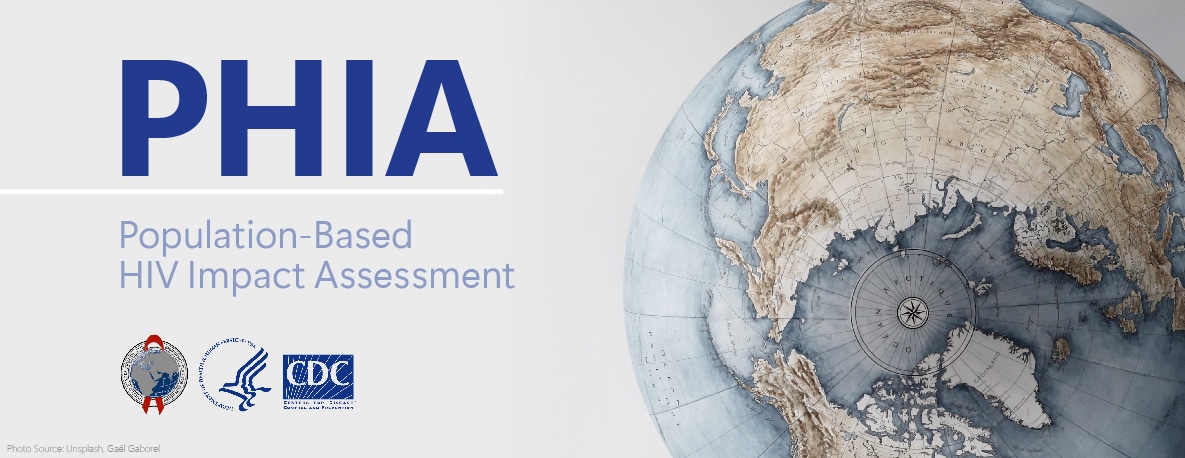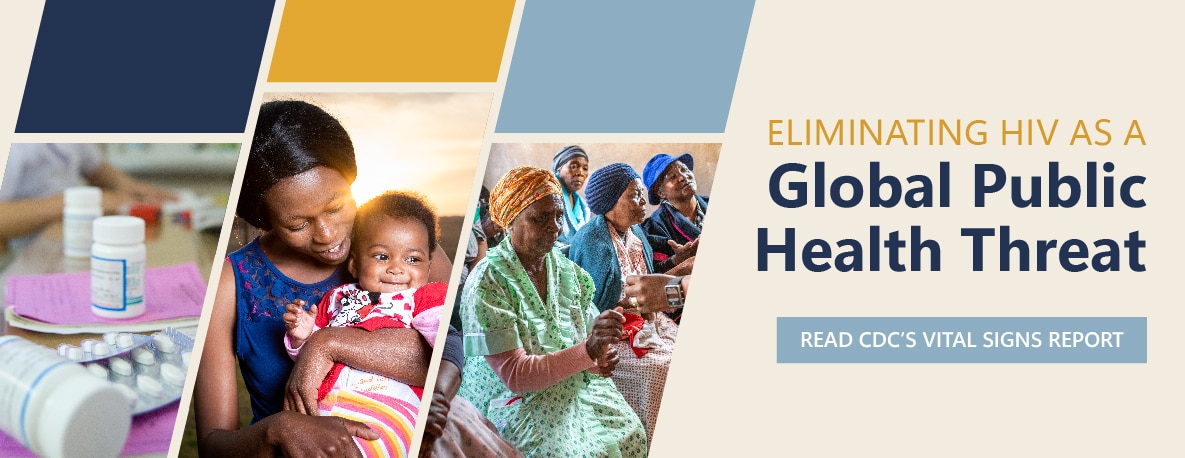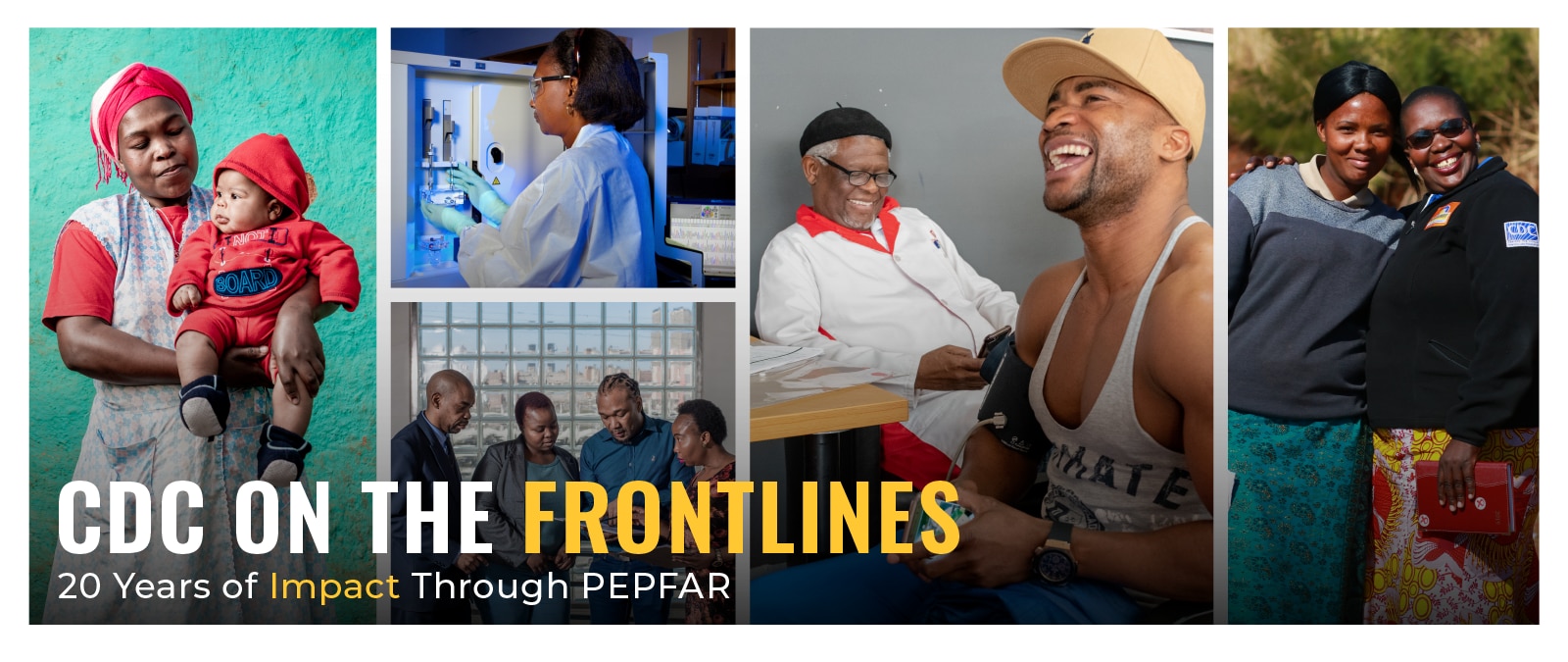Malawi Country Profile

Malawi Country Profile
Discover more about CDC’s work in Malawi by viewing our detailed country profile
Country Overview
CDC opened its Malawi office in 2001 and continues to work with the country’s Ministry of Health to strengthen its health system and implement high-impact HIV programs, including HIV testing and counseling, prevention of mother-to-child transmission of HIV, antiretroviral treatment, and voluntary medical male circumcision. Beyond HIV service delivery, CDC’s partnership with Malawi also focuses on building healthcare workforce capacity; strengthening laboratory systems; and increasing the capacity of its HIV surveillance and health information systems to collect and analyze data for improved program decision-making.
Per Capita GNI
$640
(2022)
Population (million)
20.4
(2022)
Under 5 Mortality
41.9/1,000 Live Births
(2021)
Life Expectancy
62.9 Years
(2021)
Estimated HIV Prevalence
7.1%
(Ages 15-49): (2022)
Estimated AIDS Deaths
10,000
(Age≥15) (2022)
TB Treatment Success Rate
90%
(2020)
Estimated TB Incidence
132/100,000
(2021)
Estimated Orphans Due to AIDS
470,000
(2022)
TB patients with known HIV-status who are HIV-positive
45%
(2021)
Reported Number Receiving Antiretroviral Therapy (ART)
891,950
(Age≥15) (2022)
Strategic Focus
Public Health Program Implementation: The Centers for Disease Control and Prevention (CDC)-Malawi office opened in November 2001, and works with the Ministry of Health (MOH) to build their health system capacity and implement high-impact HIV programs, including HIV testing and counseling (HTC), prevention of mother-to-child transmission (PMTCT), antiretroviral therapy (ART), and voluntary medical male circumcision (VMMC).
Building Workforce Capacity: CDC works with the MOH, Christian Health Association of Malawi (CHAM) and College of Medicine (COM) (training institutions) to address healthcare workforce shortages by investing in pre- and in-service training through support of student bursaries, revision of pre-service training curricula, improvement of training colleges infrastructure, and mentoring of teaching staff. CDC has also helped establish residency programs for Obstetrics and Family Medicine, and is collaborating with MOH to institute the Field Epidemiology Training Program (FETP).
Strengthening Laboratory Systems: CDC supports the MOH in establishing and sustaining a four tiered approach (Central, District, Facility and Community) to strengthen laboratory capacity through an international accreditation process. National diagnostics standards and guidelines have also been developed to assure the quality of laboratory test results throughout the country. CDC supports the national sample transportation system to enable testing for viral load, early infant diagnosis, and tuberculosis.
Strengthening Surveillance and Health Information Systems: CDC continues to provide technical assistance (TA) to help build the country’s capacity to collect and analyze data for improved program decision-making. CDC provides technical and financial support to monitor transmission and emergence of HIV drug resistant strains, and monitor the impact of HIV interventions on prevalence and incidence.
Key Activities and Accomplishments
Test and Start: CDC provided TA to the MOH to update National Guidelines to include Test and Start; revisions to the training curriculum, funded training, and provided support to monitoring the rollout. By the beginning of 2017, all priority sites were offering Test and Start.
Completed First Population-based HIV Impact Assessment: Data collection for the Malawi Population-based HIV Impact Assessment was completed in 2016, and preliminary data presented in 2017 demonstrate progress towards the 90-90-90 goals in Malawi and the great strides the national HIV program has made in responding to the HIV epidemic. Data have been used to better characterize the epidemic in Malawi, including informing program planning and supporting national HIV estimates.
Improved HIV Prevention through Voluntary Medical Male Circumcision: CDC continues to play a critical role in supporting scale up of the VMMC program in Malawi. CDC supports VMMC in Lilongwe district with 2017 program data showing an achievement of 30,136 and a cumulative achievement of 105,513 VMMC procedures since the program started in 2012.
Strengthened Health Systems: CDC has supported the establishment of Malawi’s first obstetrics residency program, and in 2017, 20 resident physicians were enrolled in the program. To strengthen HIV testing services at the facility level, CDC supported the hiring of 733 HIV diagnostic assistants across 207 facilities. CDC also launched a Field Epidemiology Training Program (FETP) in Malawi, a three month in-service training for health professionals who provide surveillance and monitoring services to the MOH and Ministry of Agriculture. Trainees ‘learn by doing’ with 75% of time spent in the field conducting data quality audits and assisting in disease surveillance and outbreak investigation. 15 trainees graduated from FETP Frontline in 2017; a total of 38 trainees have graduated since the start of the program in 2016.
Electronic Medical Records: CDC supports Baobab Health Trust in the expansion of Electronic Medical Records Systems. By the end of 2017, the National ART module was implemented in 120 health facilities through CDC assistance. CDC also supports the MOH National Quarterly Monitoring and Evaluation System and the national Laboratory Information Management System.

Tracking PEPFAR Impact Toward Global Targets
The U.S. Centers for Disease Control and Prevention (CDC) works with partners including host countries, local implementing partners, faith-based organizations, and other community-based organizations to measure progress towards HIV epidemic control in countries supported by the U.S. President’s Emergency Plan for AIDS Relief (PEPFAR).

Vital Signs: Global HIV Communications Toolkit
In 2003, the U.S. President’s Emergency Plan for AIDS Relief, or PEPFAR, was announced. When it was launched, PEPFAR became the largest commitment by any nation to address a single disease in history. At the time, HIV was a global crisis, devastating families, communities, and economies worldwide—particularly in sub-Saharan African countries.

CDC On the Frontlines
Over the past 20 years, the U.S. President’s Emergency Plan for AIDS Relief (PEPFAR) has saved millions of lives as a leader in the global response to two of the world’s deadliest infectious diseases – HIV and TB. As a key implementing agency of the U.S. President’s Emergency Plan for AIDS Relief (PEPFAR), CDC is at the forefront of these global efforts to treat and prevent these diseases.